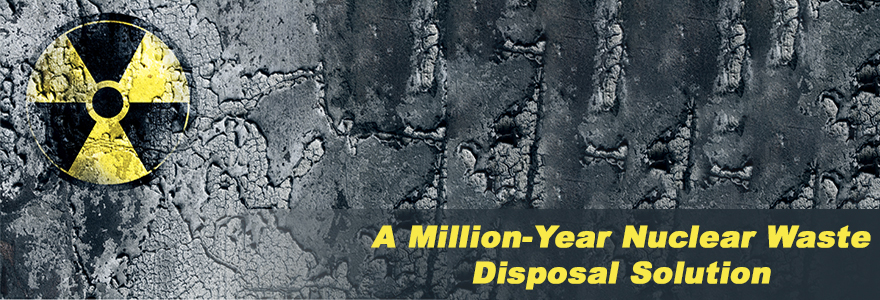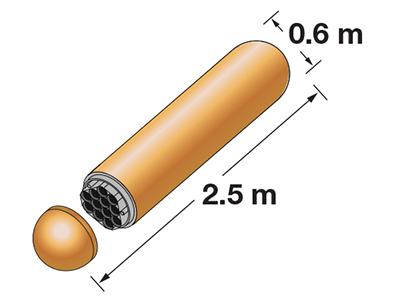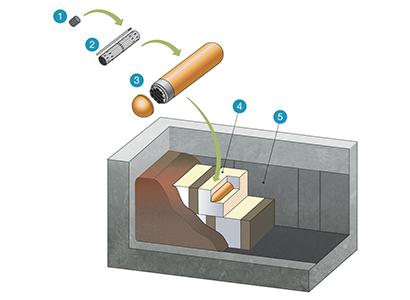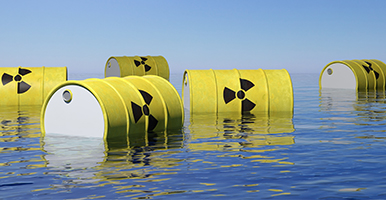Needed: A Million-Year Waste Disposal Solution

Over the past century, humanity has experienced the adverse effects of more frequent and extreme environmental events, from forest fires and heatwaves to floods and storms – as a result, we have witnessed a loss of wildlife and the devastation of scenic landscapes we know and cherish. It’s no secret that our planet is facing a climate emergency.
Nuclear energy has become a major part of Canada’s landscape, with four power stations operating in Ontario and New Brunswick providing about 15% of our electricity. Our country has plans to expand its nuclear capacity, which, from an environmental perspective, is a very worthy goal – nuclear power does not produce carbon dioxide, the main heat-trapping pollutant that significantly contributes to the current climate crisis.
Together, Canada’s four nuclear facilities can power almost 11 million homes, but after nuclear fuel is used in a reactor, it is considered a hazardous waste product. If we want to ensure our planet is a clean and safe place to live, transitioning to zero-carbon energy sources like nuclear may be part of the solution – but in so doing, protecting citizens and the environment from harmful radioactive waste must be among our top priorities. Spent nuclear fuel can remain radioactive for up to 1 million years, and exposure to radioactive contaminants can cause sickness, disease, or even loss of life.
 Enter Master’s student Lindsay Braithwaite with Western University’s Electrochemistry and Corrosion Science Group (ECS). She investigates the corrosion behaviour of copper-coated carbon-steel canisters that will be stored underground until the spent fuel’s radioactivity completely decays. Her study is part of the larger project the ECS lab is working on in collaboration with the Nuclear Waste Management Organization (NWMO).
Enter Master’s student Lindsay Braithwaite with Western University’s Electrochemistry and Corrosion Science Group (ECS). She investigates the corrosion behaviour of copper-coated carbon-steel canisters that will be stored underground until the spent fuel’s radioactivity completely decays. Her study is part of the larger project the ECS lab is working on in collaboration with the Nuclear Waste Management Organization (NWMO).
Braithwaite examines what would happen if the copper coating of a used fuel canister had a hole, or a defect, that was undetected by inspection procedures. If this hole penetrated to the underlying steel, it would be in electrical contact with the copper in the same groundwater solution. This could trigger a process called galvanic corrosion, which is known to cause rapid degradation of materials or structures. “We need to investigate the conditions that could accelerate material degradation to avoid potential environmental contamination and the significant human costs this could entail,” stresses Braithwaite.
Image 1: Used nuclear fuel containers, made from steel and copper, are designed to contain and isolate nuclear waste underground. Courtesy of NWMO.

Image 1 Caption
Made from steel and copper, used nuclear fuel containers are designed to contain and isolate used nuclear fuel underground. The container prevents radionuclides in the fuel from escaping into the underground environment. It is engineered to remain intact and keep the used nuclear fuel completely isolated until the fuel’s radioactivity has decreased to levels of natural uranium.
Image 2: The multiple-barrier disposal system includes sealing used fuel bundles inside of copper-coated carbon-steel canisters. Courtesy of NWMO.

Image 2 Caption
This diagram shows the multiple-barrier system that will contain and isolate the used nuclear fuel underground.
- Nuclear Fuel Pellets - the pellets are made from uranium dioxide powder.
- The Fuel Element and the Fuel Bundle - fuel bundles are composed of a number of sealed tubes called fuel elements. The fuel elements contain the fuel pellets.
- The Used Nuclear Fuel Container
- Bentonite Clay - during placement in the repository, each used nuclear fuel container will be encased in a highly compacted bentonite clay buffer box.
- The Geosphere - the geosphere forms a natural barrier of rock, which will protect the repository from disruptive natural events, water flow and human intrusion. The repository will be approximately 500 metres underground.
Braithwaite discovered that the bentonite clay the canisters will be encased in could help decrease the rate of galvanic corrosion. Oxygen will be trapped underground during the container emplacement process – although the oxygen will be quickly consumed after the underground system has been backfilled and sealed, it is the primary driver of metal corrosion. Fortunately, Braithwaite determined that the clay makes it difficult for oxygen to reach the container’s metal surface – as a result, the clay could help slow down the rate of material degradation.
Braithwaite’s lab mates and their partners at the NWMO will use her discoveries to continue improving on their container design. For now, Braithwaite’s peers at Western University are continuing to investigate a variety of corrosion processes, environmental factors, and material features that could cause container degradation over the lifetime of disposal. Ultimately, the plan for the long-term management of used nuclear fuel is meant to protect citizens and the environment from unsafe exposure for generations to come.
Story by Jessica Singer
Other stories you may find interesting:
 Keeping Nuclear Waste out of the Watershed
Keeping Nuclear Waste out of the Watershed
Spent nuclear fuel appears as a simple bundle of metal rods but the processes of storing them safely are necessarily complex. The initial issue addressed in nuclear waste management was the prevention of groundwater contamination; one of the present-day hot topics is how to design a safe and affordable container for the radioactive waste.

